
Romanticism - III
Orientalism
Orientalism
In art history, literature and cultural studies, orientalism is the imitation or depiction of aspects of the Eastern world (or "Orient") by writers, designers, and artists from the Western world. Orientalist painting, particularly of the Middle East, was one of the many specialties of 19th-century academic art, and Western literature was influenced by a similar interest in Oriental themes.
Since the publication of Edward Said's Orientalism in 1978, much academic discourse has begun to use the term 'Orientalism' to refer to a general patronizing Western attitude towards Middle Eastern, Asian, and North African societies. In Said's analysis, 'the West' essentializes these societies as static and undeveloped—thereby fabricating a view of Oriental culture that can be studied, depicted, and reproduced in the service of imperial power. Implicit in this fabrication, writes Said, is the idea that Western society is developed, rational, flexible, and superior. This allows 'Western imagination' to see 'Eastern' cultures and people as both alluring and a threat to Western civilization.
Jean-François Portaels
1818 – 1895
Jean-François Portaels or Jan Portaels (3 April 1818 – 8 February 1895) was a Belgian painter of genre scenes, biblical stories, landscapes, portraits and orientalist subjects. He was also a teacher and director of the Academy of Fine Arts of Ghent and the Académie Royale des Beaux-Arts in Brussels. He is regarded as the founder of the Belgian Orientalist school. He was praised in his time as the premier painter of 'everyday elegance and feminine grace'. Through his art, teaching and his leadership of the Académie Royale in Brussels he exerted an important influence on the next generation of Belgian artists, including his pupil Théo van Rysselberghe.

Self-portrait

Oriental Beauty

Oriental Beauty
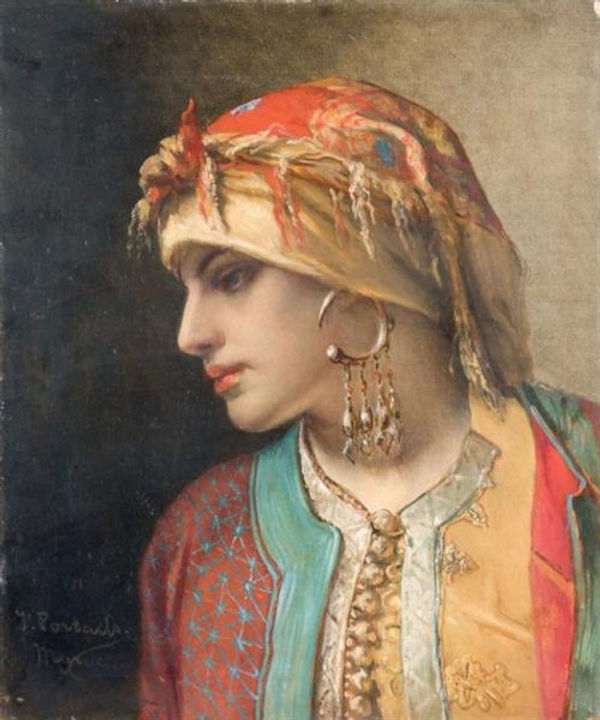
Oriental Beauty

Oriental Woman

Jew woman from Tangier

Oriental Beauty

Portrait of a Young Girl with a Mask

Oriental Woman
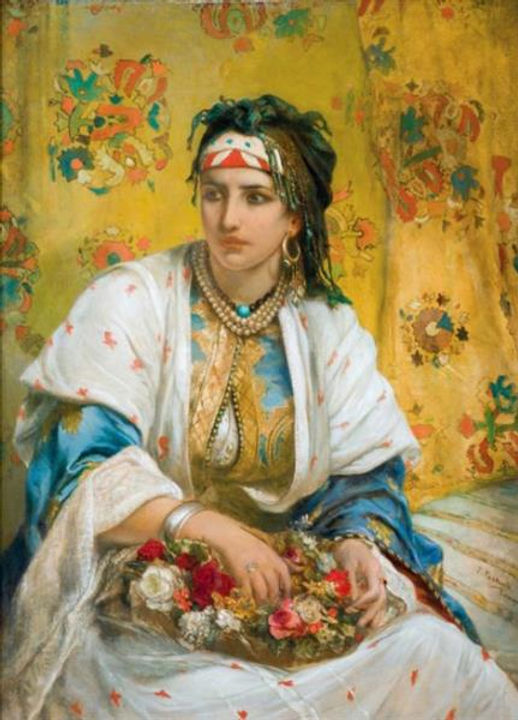
Oriental Woman

Portrait of a Young Girl

Portrait of a Young Moroccan Woman

The Tambourine Player in Repose
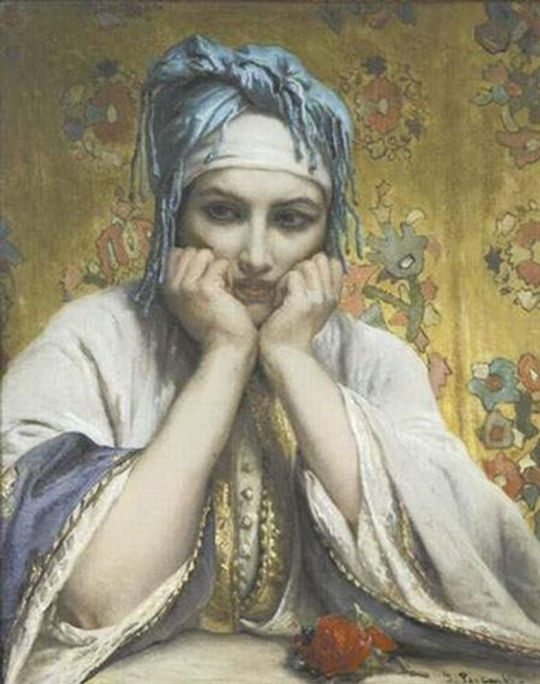
Young Arab Woman from Tanger

Young Girl

Idyll

Jewish Woman from Cairo

Odalisque

The slave market
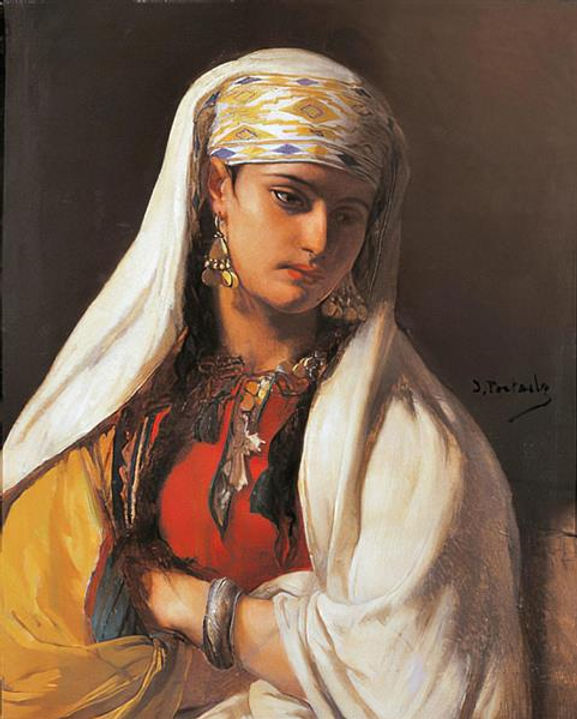
Oriental Woman

Southern Fair

The new jewels
Theodore Chasseriau
1819 - 1856
Théodore Chassériau (September 20, 1819 – October 8, 1856) was a Dominican-born French Romantic painter noted for his portraits, historical and religious paintings, allegorical murals, and Orientalist images inspired by his travels to Algeria. Early in his career he painted in a Neoclassical style close to that of his teacher Jean-Auguste-Dominique Ingres, but in his later works he was strongly influenced by the Romantic style of Eugène Delacroix. He was a prolific draftsman, and made a suite of prints to illustrate Shakespeare's Othello. The portrait he painted at the age of 15 of Prosper Marilhat makes Chassériau the youngest painter exhibited at the Louvre museum.

A self-portrait of Chassériau painted at the age of 16

Andromeda and the Nereids
1840

Desdemona Retiring to her Bed
1849

The Toilet of Esther
1841

Medea about to Kill her Children
1846-50

Orientalist Interior: Nude in a Harem
1850-52

Sappho Leaping into the Sea from the Leucadian Promontory
c. 1840

The Tepidarium
1853

Vénus marine dite Vénus Anadyomène
1838

Study of a Man
1832

Macbeth and Banquo Meeting the Witches on the Heath
1855

Othello and Desdemona in Venice
1850

Scene in the Jewish Quarter of Constantine
1851

Adèle et Aline Chassériau
1843

Danseuses mauresques
1849

Odalisque

Young Moorish Woman Nursing Her Child
1850

Woman and girl from Constantine with a gazelle

Scène de Harem, Femme Mauresque à sa toilette
Jean-Leon Gerome
1824 - 1904
Jean-Léon Gérôme (11 May 1824 – 10 January 1904) was a French painter and sculptor in the style now known as academicism. His paintings were so widely reproduced that he was "arguably the world's most famous living artist by 1880." His range of his works includes historical paintings, Greek mythology, Orientalism, portraits, and other subjects. He is considered one of the most important painters from this academic period. He was also a teacher with a long list of students.

Gérôme with Emma Dupont, the model for Omphale
c. 1885

The Slave Market
c. 1866

The Cock Fight
1846

Greek Interior
1848

Slave Market in Rome
c. 1884

King Candaules of Lydia
1859

Pollice Verso
1872

Pool in a Harem
c. 1876

Snake Charmer
c. 1879

Duel after a Masked Ball
1857

Ave Caesar! Morituri te Salutant
1859

The Artist and His Model
1890
Dahesh Museum of Art; Gérôme depicts himself sculpting Tanagra, likely from model Emma Dupont, with Pygmalion and Galatea in the background.

Pygmalion and Galatea
1969

Pygmalion and Galatea
c. 1890

La fin de séance (The End of the Session)
1886

Self-portrait, painting The Ball Player
1902

Truth Coming Out of Her Well
1896
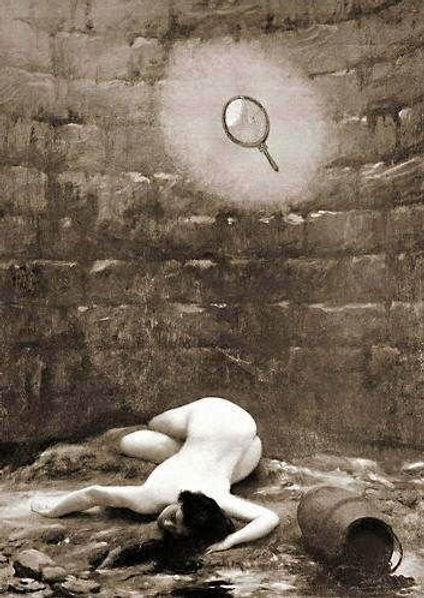
Mendacibus et histrionibus occisa in puteo jacet alma Veritas
(The nurturer Truth lies in a well, having been killed by liars and actors
1895)

Truth is at the Bottom of the Well
1895

Buying A Slave
1857

A Roman Slave Market
c. 1884

The Slave Market
1871

Phryne Before the Areopagus (detail)
1861
A depiction of Phryne, a famous hetaera (courtesan) of Ancient Greece, being disrobed before the Areopagus. Phryne was on trial for profaning the Eleusinian Mysteries, and is said to have been disrobed by Hypereides, who was defending her, when it appeared the verdict would be unfavourable. The sight of her nude body apparently so moved the judges that they acquitted her. Some authorities claim that this story is a later invention.

Anacreon, Bacchus, and Eros
1848

The Slave Market
1871

Michelangelo Being Shown the Belvedere Torso
1849

An Idyll (Daphnis and Chloe)
1858

Diogenes
1860

The Christian Martyrs' Last Prayer
1863

Napoleon in Egypt
c. 1863
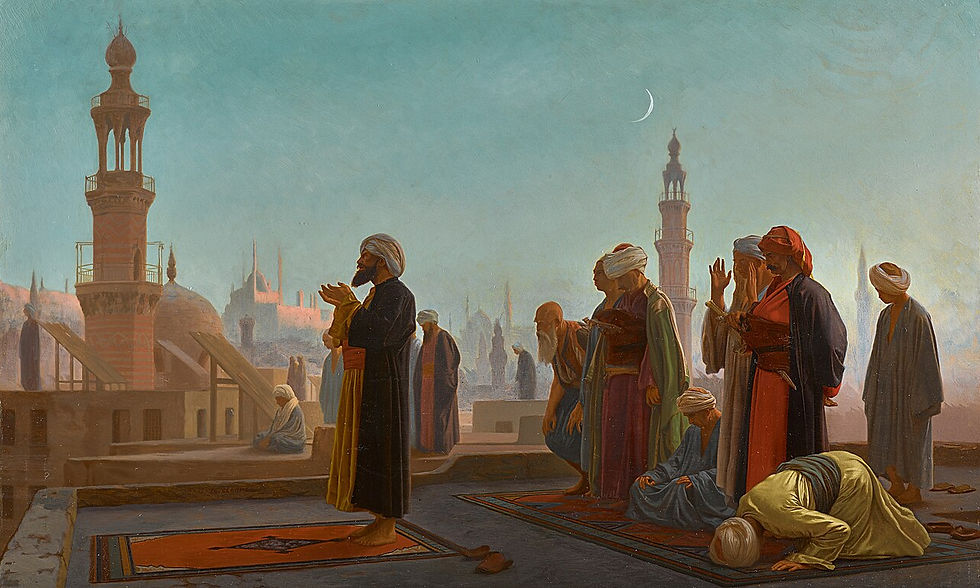
Evening Prayer, Cairo
1865

Heads of the Rebel Beys at the Mosque of El Hasanein, Cairo
1866

Cleopatra and Caesar
1866

The Death of Caesar
1867

The Execution of Marshal Ney
1868

The Harem in the Kiosk
c. 1870–1875

Femme circassienne voilée, or Veiled Circassian Beauty
1876

The Dance of the Almeh
1863

Bonaparte Before the Sphinx
1867 - 1868

Moorish Bath
1870

The Large Pool of Bursa
1885

Moorish Bath
1885
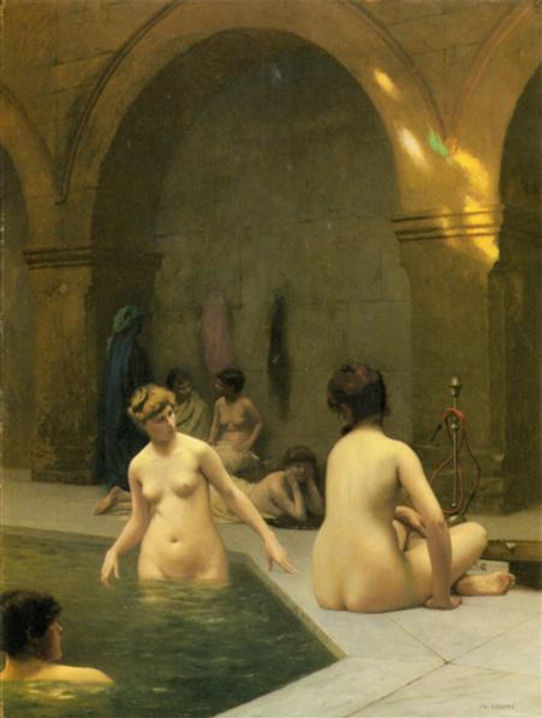
The Bathers
1889

The Wailing Wall
1880

The Antique Pottery Painter: Sculpturæ vitam insufflat pictura (painting breathes life into sculpture)
1893

Leda and the Swan
1895
Maria Fortuny
1838 - 1874
Marià Josep Maria Bernat Fortuny i Marsal (June 11, 1838 – November 21, 1874), known more simply as Marià Fortuny or Mariano Fortuny, was the leading Spanish painter of his day, with an international reputation. His brief career encompassed works on a variety of subjects common in the art of the period, including the Romantic fascination with Orientalist themes, historicist genre painting, military painting of Spanish imperial expansion, as well as a prescient loosening of brush-stroke and color.

Self portrait

The Odalisque
1861

The Odalisque
1862

Fantasy about Faust

Hindu snake charmers
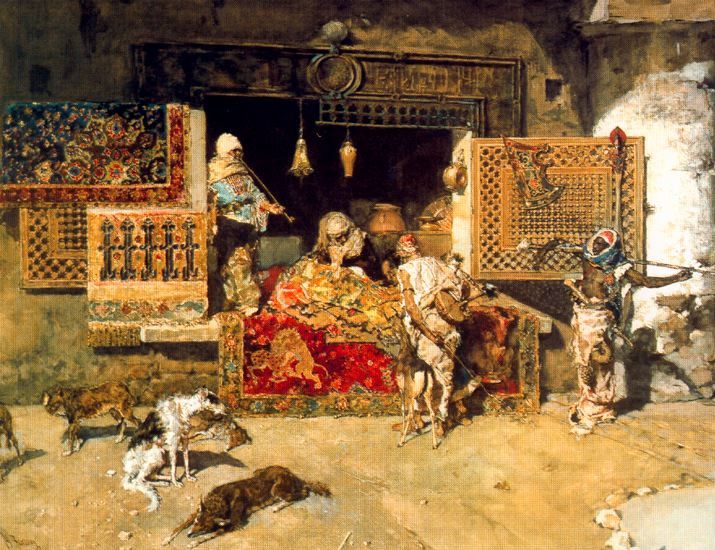
The Tapestry Seller
1870
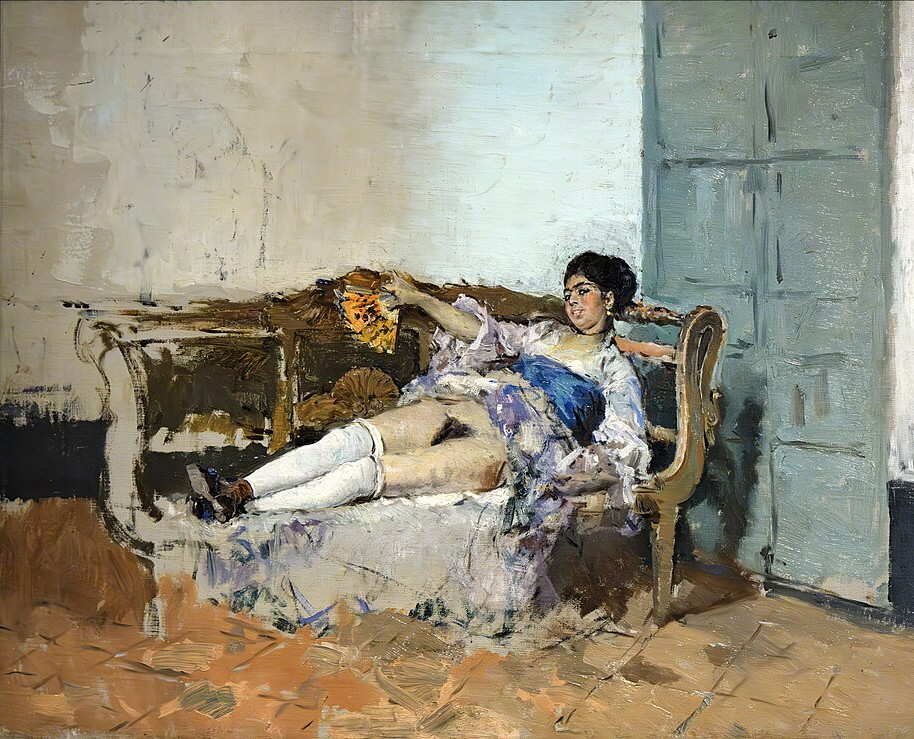
Carmen Bastian
c. 1871

African Beach
c. 1867

The Nude on Portici Beach

The Odalisque
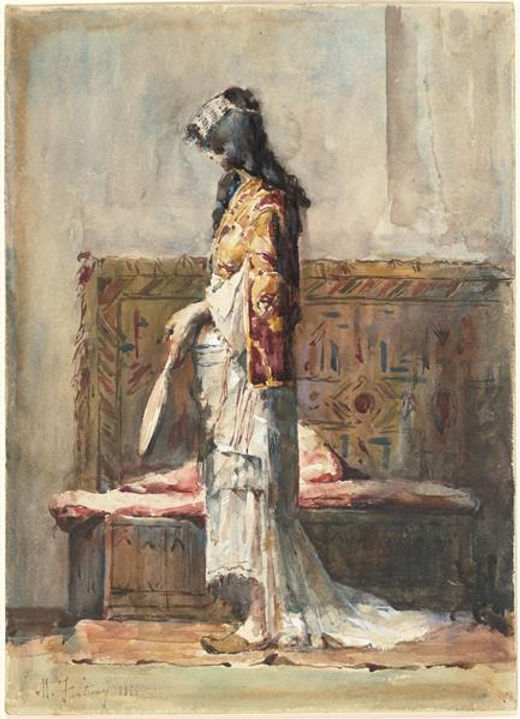
A Moroccan woman in traditional dress
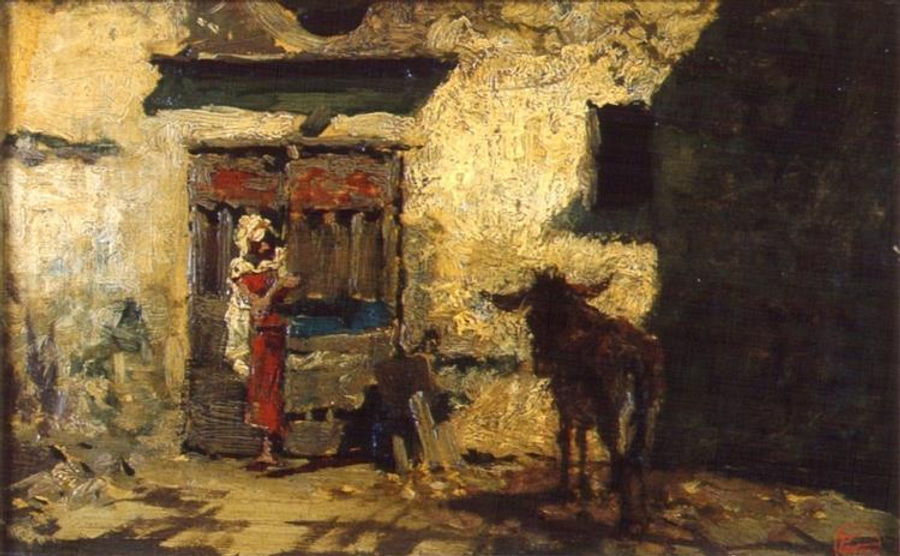
Arab husband
